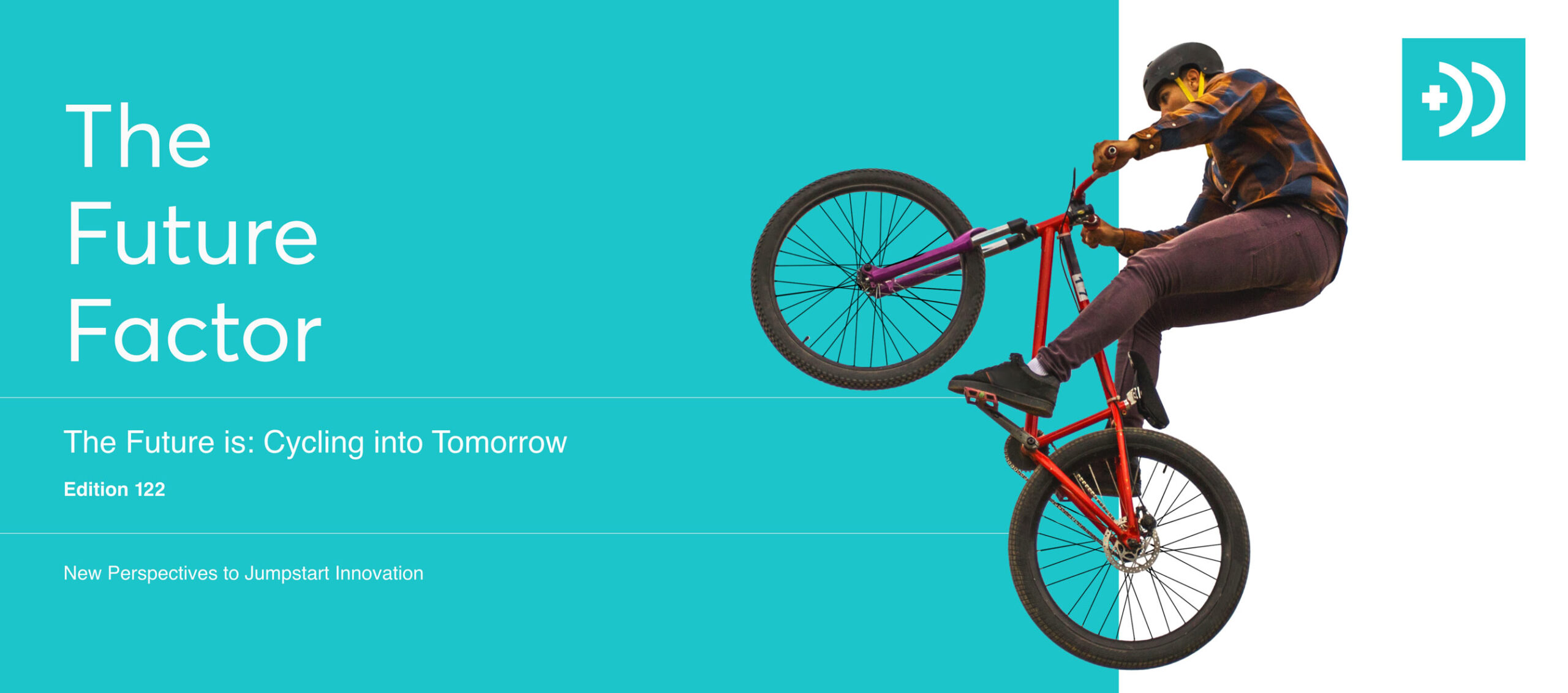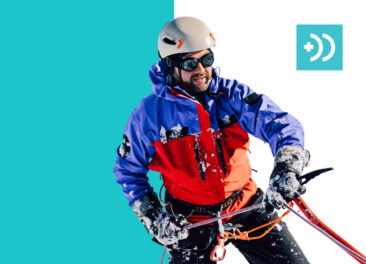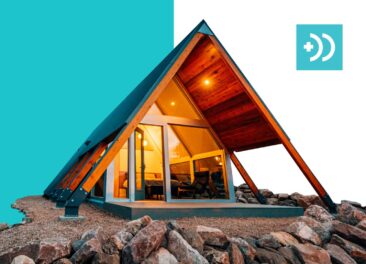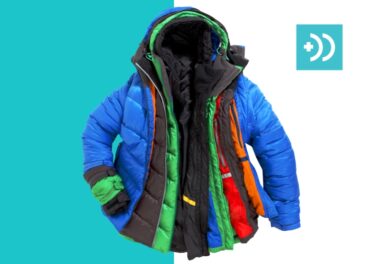The Future Is: Cycling Into Tomorrow
With over a billion bikes on the planet and counting, cycling is zooming ahead. The global bicycle market value is approaching $57 billion this year and will reach $92 billion by 2028. Here in the US, 48 million people bicycle recreationally per year, and bike activity of all sorts ticked up 10% in the summer of 2020 from the summer of 2019. Commuting by bike has grown 73% in our largest cities, changing the shape of our urban centers. Chicago, for example, plans to add 100 miles of new bike lanes by the end of 2022. Here’s a look at the innovations that will unfold as interest in cycling surges.
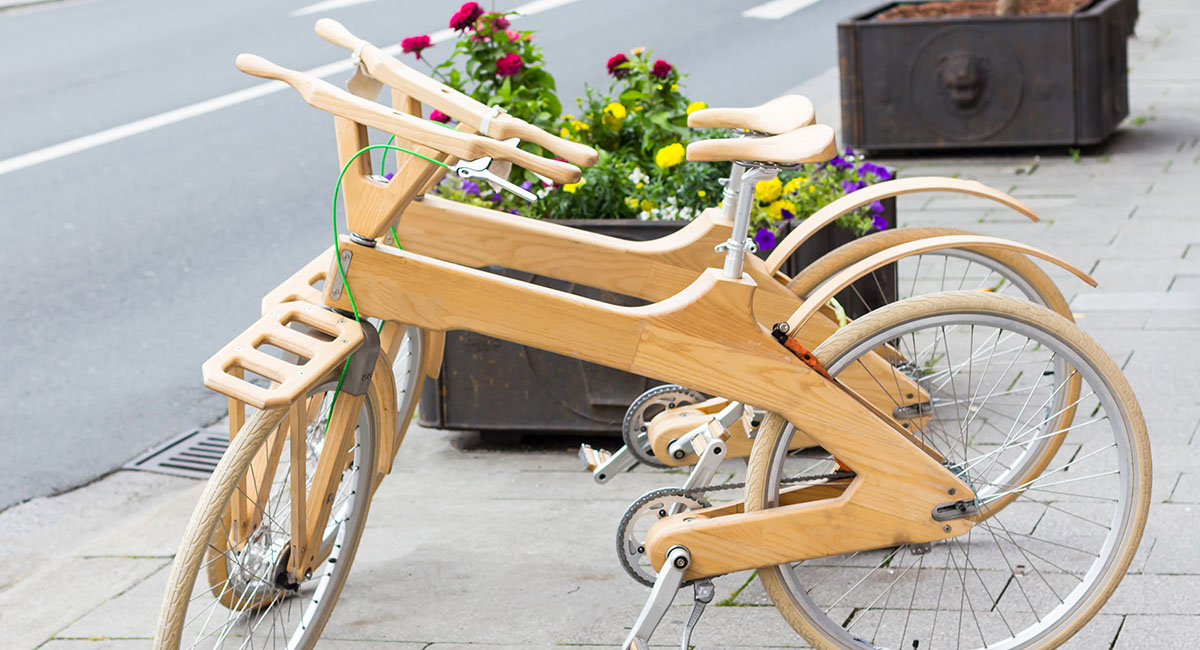
NOW: Radical Eco-Cycling
What’s Fresh: Cycling started out as a hyper-natural mode of transportation: No fuel except human muscle power. Even as two-wheelers go way high-tech, brands are looking for ways to honor the environment. The hydrogen-powered LAVO e-bike will soon launch to transport heavy loads over long distances – without heavy batteries, particulates, or CO2 emissions. Elsewhere, a return to the most natural of bikes (a wooden one), with today’s functionality, is being explored by woodworker Evie Bee. Those who pedal are also being incentivized to keep up the good work. In London, the HumanForest e-bike rental company has a frequent-rider program: The more people cycle, the more credits they get to keep at it.
How It Changes the Game: Don’t lose sight of cycling’s eco heritage. If upheld and advanced, it can be a critical point of difference as both a form of transportation and of play.
3 Action Steps for Brands:
1. Make sure e-bikes embrace eco principles, rather than becoming lightweight motorcycle wannabes.
2. Hold your supply chain accountable to be ultragreen.
3. Find ways to uplift the bicycling commuting, both within your company and in your top markets. What can you sponsor, and who are your influencers on this front?
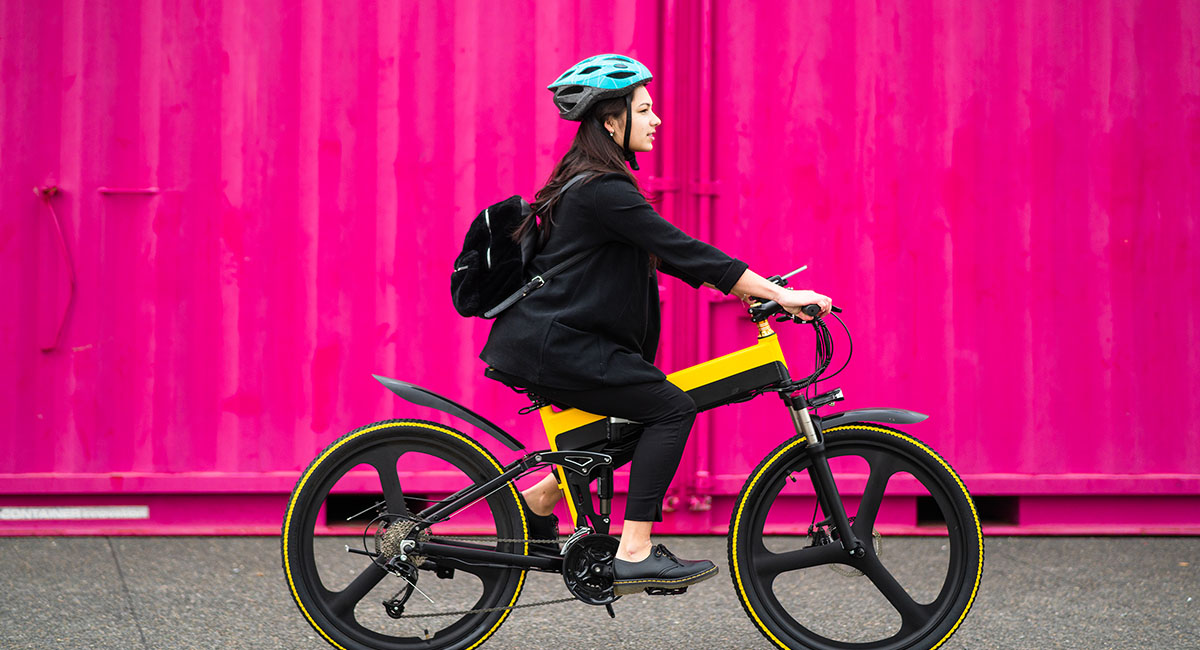
NOW: Smarter Bikes
What’s Fresh: Bikes are already guided by GPS and tech-protected from theft. But the IoT is also evolving cycling toward ever more connected and curated experiences. Already, smart onboard computers – such as the Nyon from Bosch – determine the pedaling force and frequency during a journey and use this information to parse the cyclist’s performance. This data can be used to finetune training. In the realm of electric mountain bikes, prototypes are working toward being super “smart.” The bikes will seamlessly tune in to riders’ heart rates and interpret suspension inputs to create smoother experiences.
How It Changes the Game: IoT integration makes cycles an extension of ourselves: They’ll funnel information; they’ll track and optimize our health; and they’ll be perfectly responsive to our unique riding needs.
3 Action Steps for Brands:
1. Wire your products and app-ify the output so your consumer can assess their data.
2. Develop ways for cycles to partner with an individual’s needs – easier pedaling after a poor night’s sleep, for example.
3. Communicate the value-add of this responsiveness and the higher-level benefits of calm, control, and wellness it delivers.
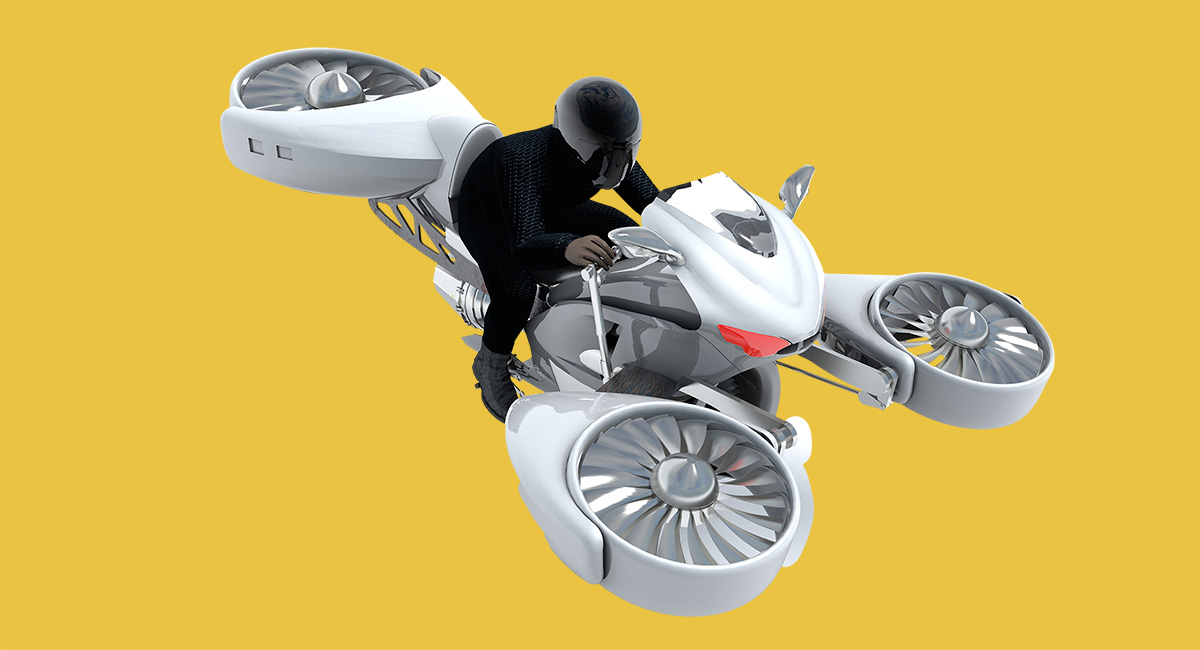
NEXT: Air Cycles
What’s Emerging: It’s no longer just the stuff of science fiction. Soon, we’ll escape gravity and take to the skies on futurized cycles. Japan’s A.L.I. Tech’s ‘Xturismo Limited Edition’ hoverbike is currently taking orders; each of these coming-soon aircrafts costs $680,000 and will stay aloft for 40 minutes while traveling 60 mph. But it will soon have competition: JetPack Aviation is planning to produce its own flying motorbike, the Speeder, by 2023.
How It Creates the Future: Everyone wants to be up in the air, with flying taxis and suborbital flights also competing for airspace. These flying bikes are a first foray into personal travel, above the highway congestion.
3 Things to Prepare for:
1. Partner with skybound businesses or incubate your own flying products.
2. Consider the implications of short-hop bike flights. For instance, will self-heating clothes be required for higher altitudes?
3. Determine who the target will be for this mode of transportation – Gen Z adrenaline junkies, time-short CEOs? – and plan accordingly.

